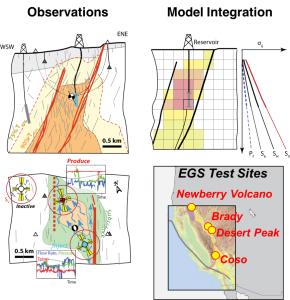 Overview
Overview
Structural geology involves mapping the three-dimensional distribution and type of structures that accommodate deformation in the earth.
Brittle fault zones are composed of a few essential elements: (1) a slip surface; (2) the core consisting of highly deformed rocks which can include gouge or cataclasite; (3) the damage zone surrounding the core which consists deformation spatially associated with the fault.
In some instances this is simply referred to as the structure of the fault zone, but more recently this has been referred to as the architecture of the fault to avoid confusion with the many uses of the term structure.
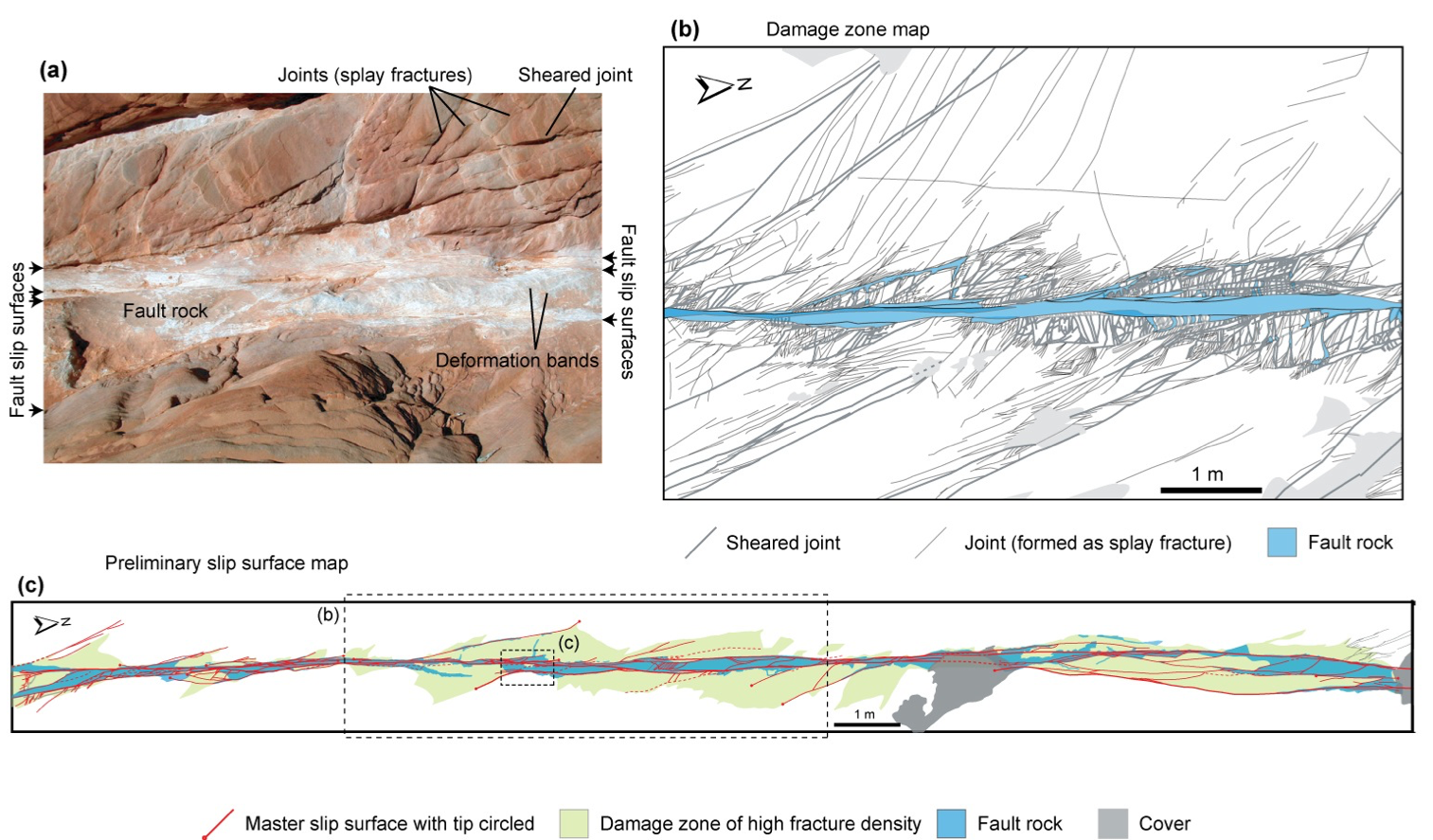 |
These structures accumulate during the process of fault growth and repeated slip. The arrangement and relationships among these materials and structures determine the properties, and thus behavior of a fault zone including:
|
Hydrology |
Stress & Strength |
Elasticity |
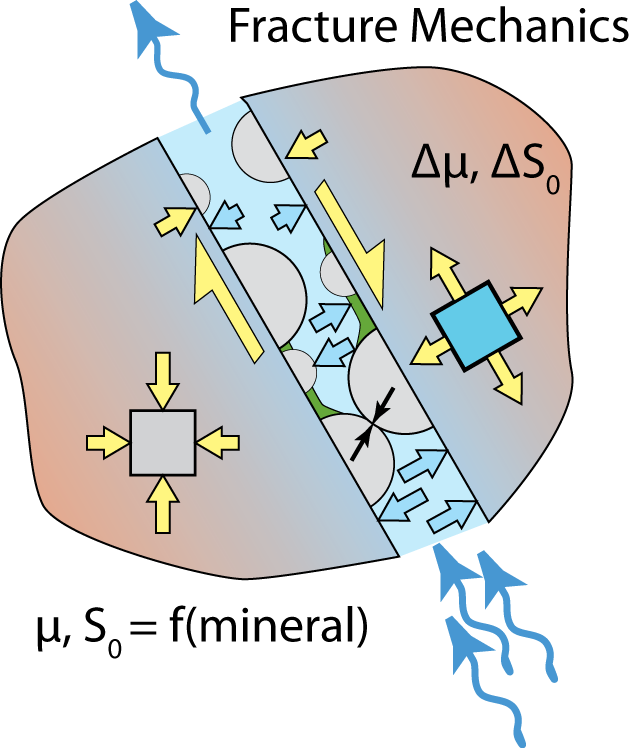 |
 |
 |
Fault zones can have a significant impact on fluid flow. In many cases they change the local permeability of a rock mass and can form vertically extensive zones that either conduct or impede fluid flux. In stratified materials there are four four end-member cases: (1) faults that act as barriers to flow; (2) faults that are transparent to flow, but which juxtapose rocks of differing permeability; (3) faults that act as high permeability conduits to fluid flux; (4) faults in which the damage zone and core differ in permeability, such that the damage zone isolates a permeable fault core, or in which a low permeability fault core separates damage zones of enhanced permeability.
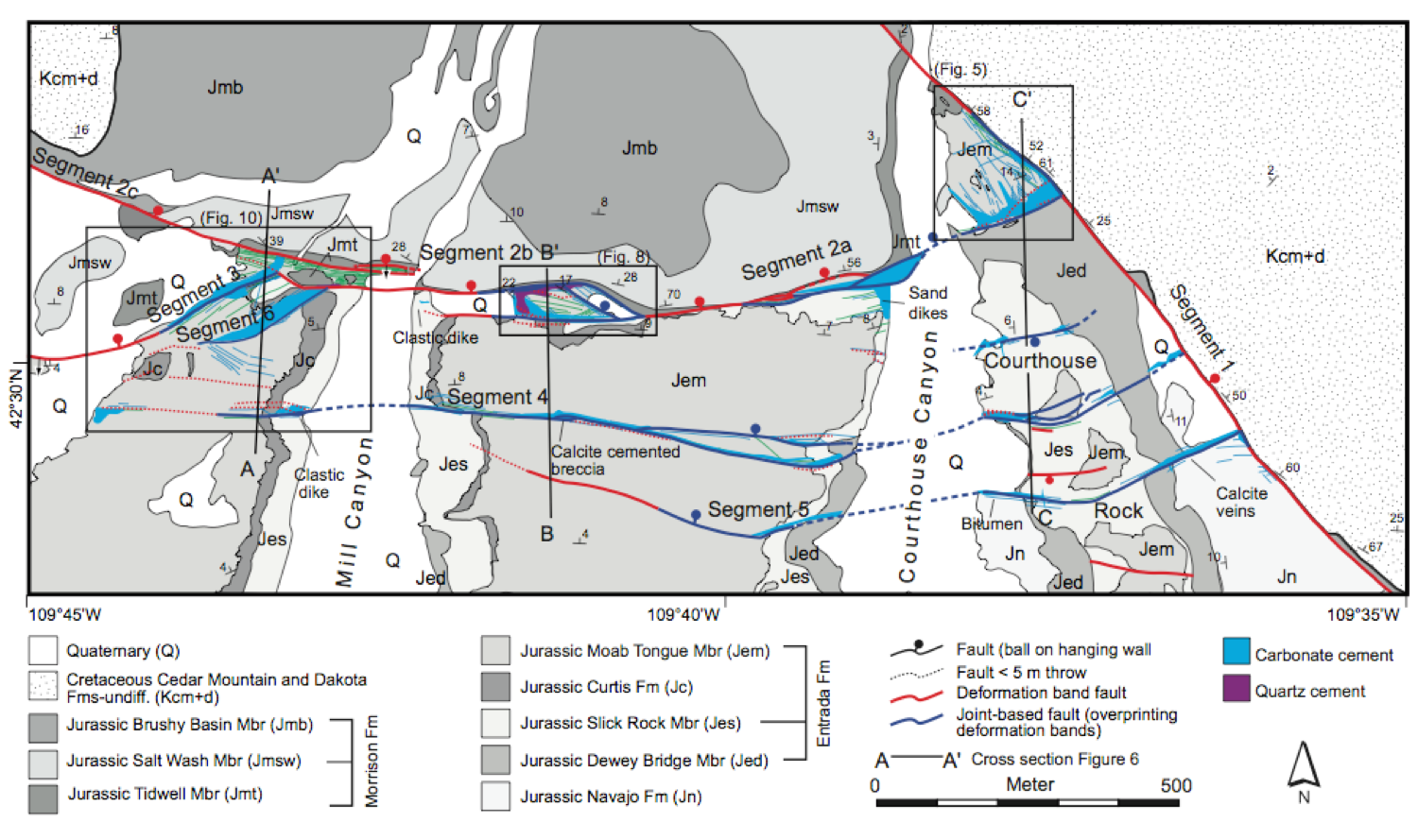 |
In massive rocks, such as igneous or metamorphic materials, faults usually act as preferred fluid conduits. However, focusing fluids along a fault where frictional slip has reduced grain size and created fresh crystal surfaces promotes chemical reaction. These reactions can promote healing, recovery of cohesion by mineral precipitation, or alteration that introduces new phases into the fault and new physical properties.
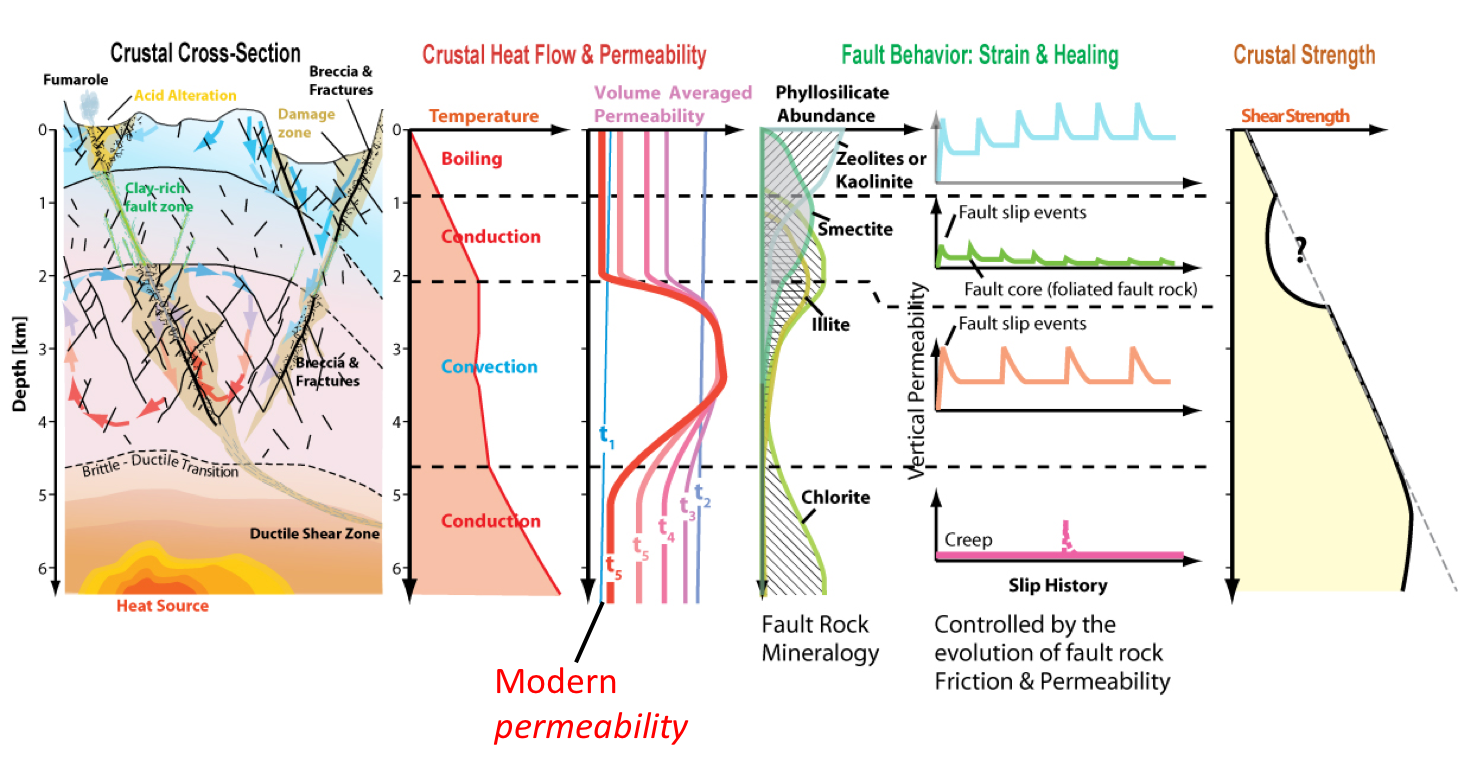 |
Goals
Because variation in slip along faults distort the volume around them, closely spaced faults form interacting networks. The degree of interaction depends on the geometry of the faults, their history of slip and resulting gradients in slip, and the mechanical properties of the rock volume they offset.
- Quantify the structure (anatomy) of a fault zone
- Understand the mechanisms that lead to the fault zone structure
- Define the physical properties of the fault zone as they arise from the structures and materials that develop
Approach
- Detailed mapping of fault zone structures in the field to the thin-section scale
- Conceptual modeling of the evolutionary history of the fault zone
- Defining and exploring boundary conditions on the fault
- Detailed mapping of the geometry of offset layers or slip along a fault
- Testing the role of fault geometry in concentrating and transferring stress
v2016-12-12, © Nicholas C. Davatzes, 2016

